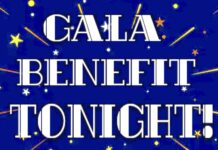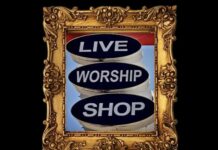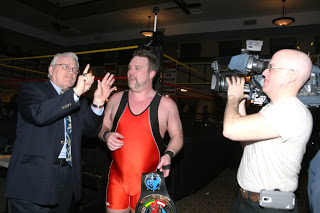
On Saturday, July 20th, the Keystone State Wrestling Association (KSWA) will host their fifth Brawl Under the Bridge event underneath the Homestead Grays Bridge. First Bell is at 7 PM and features exciting matches like a six-man ladder match for the Brawl Under the Bridge title.
One match will feature a wrestling legend, James J. “J.J.” Dillon in the corner of Shawn Blanchard in his singles match against Justin Sane.
Dillon’s start in professional wrestling was as a referee, and he credits Pittsburgh for the start of his in-ring career, where he wrestled in 3,200 matches. He’s known for being the manager of the legendary Four Horsemen wrestling stable featuring fellow pro wrestling legends Ric Flair, Arn Anderson, Ole Anderson, and Tully Blanchard.
Local Pittsburgh’s Ty Polk had an opportunity to interview J.J. Dillon for Local Pittsburgh.
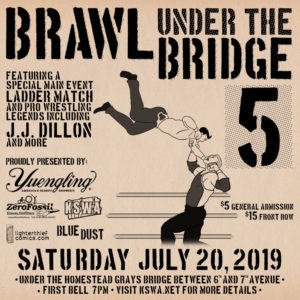
This interview was edited for content and clarity.
You started in Professional Wrestling as a referee in your home state of New Jersey. How did that opportunity come?
While I was in Reading, PA for college, they would have a live studio wrestling show to raise money every Wednesday night for one hour in the NBC Studios on Walnut Street. Then they help produce the one big show once a month that they had either at the Philly Arena or Convention Hall. One week they had a blizzard that hit on that night. Because we needed to set the ring up, we had gone down to Reading early. The storm got worse, and some of the wrestlers couldn’t make it in. But there were enough guys to be able to put together a card for an hour. They all looked at me said: “You’ve been around forever. You think you would know what to do?” I said yes, and they got me in touch with some people, and they ended up getting me on the Athletic Commission in Pennsylvania and then later in New Jersey, and that was the beginning of my career. I was the third man in the ring and Philadelphia and Boston and some of the other major arenas for some of Bruno Sanmartino’s classic title bouts with Killer Kowalski, George “The Animal” Steele, and Gorilla Monsoon. My ultimate goal, of course, was to be a professional wrestler.
You began your career wrestling in Charlotte and for “The Original Sheik” Ed Farhat in Michigan and Ohio. Why do you credit Pittsburgh as the start of your journey in Wrestling?
I was doing a TV in Dayton, Ohio, and somebody and I was supposed to grow up and do the sheets TV on that Sunday. And Jim Grabmire was there, and he said we’re going to Pittsburgh because they bring guys in for a live studio TV wrestling show that would air that it was shot there, and they were always short somebody. He said if you want to join, you’re welcome to jump in with this and go and I can almost guarantee work. So, I drove with him to Pittsburgh, and when I got there, I had the first single match of my career on Channel 11 against Killer Kowalski. At the time, I thought this probably was the closest I would ever come to dying in the ring. He would give you no rest, and he would stay on you and stay on it. When I thought I had the time to take a deep breath, get some oxygen back in my lungs. He’d slap it right out again. But how many people can say their first singles match is against Killer Kowalski? I’m very proud of that.
Your final match was in 2009 with KSWA. It was a six-man tag team match included another wrestling legend, Dominic DeNucci. Why did you decide to do one more match in the ring?
I didn’t want to put the tights on and go back in the ring. You know, some guys in the wrestling business go on years and years. It’s like age is not as big a factor as it might be in some other things. So I was approached about coming back and having a be my final match. And I was very receptive to the idea of going back to where it all started. With Dominic across the ring which I have known Dominic, you know going way back to the early days with Bruno made that special. I wasn’t in the shape that I was much earlier in my career. So, in a six-man match, I can do some things and not embarrass myself, which was the last thing I wanted to do. It was a perfect way for me to end my career as an active wrestler.
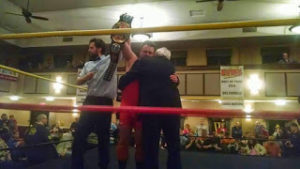
as J.J. Dillon congratulates him. Photo by “Trapper” Tom Leturgey.
In many of your appearances for KSWA, you managed one of their biggest stars, Shawn Blanchard. You’ve been in his corner for a KSWA Heavyweight title victory and his match for the NWA World’s Heavyweight Championship. You will be his manager again for Brawl Under the Bridge V in his match against Justin Sane. What’s your relationship with him and others who work in KSWA?
Shawn is somebody who throughout the years, has shown me tremendous respect. Every time I come back there, it’s always set up to be a special occasion. I get treated extremely well. It’s good to go back to where you started. I still wonder when’s the time I come back, and they won’t remember me. Every time I do come back, some people come back and tell me their story and meeting me for the first time. I enjoy coming back.
You make appearances at other independent wrestling organizations. Why do you keep on coming back to KSWA events?
Anytime I get a call where they have an event for me to come in, I’m excited to be coming in. It’s a good feeling to go back. And people come up to you with a smile on their face and then meeting you for the first time. They always want to share the dream of their first interaction in terms of where they saw you, even if they didn’t personally meet you. And now they’re meeting you for the first time, and their eyes light up. And it’s a very humbling thing. And it’s a beautiful thing to know that after all these years, the business and I worked so hard for all my life that I loved and respected, still embraces me. That’s the beautiful thing about professional wrestling. It’s timeless. It will always be there because the excitement of professional wrestling just gets passed down from generation to generation.



